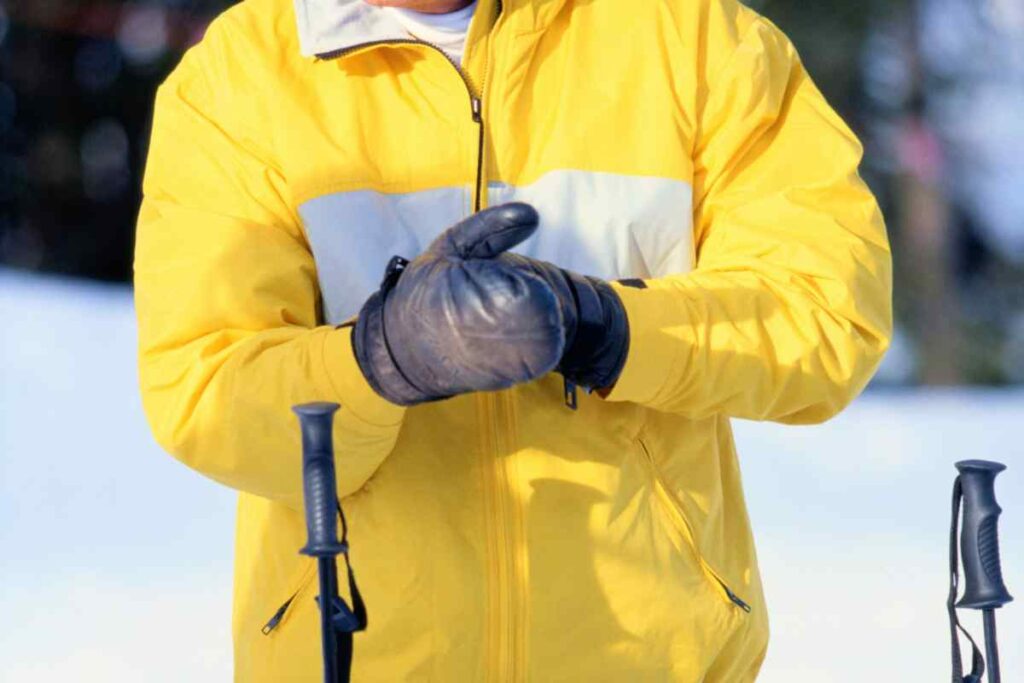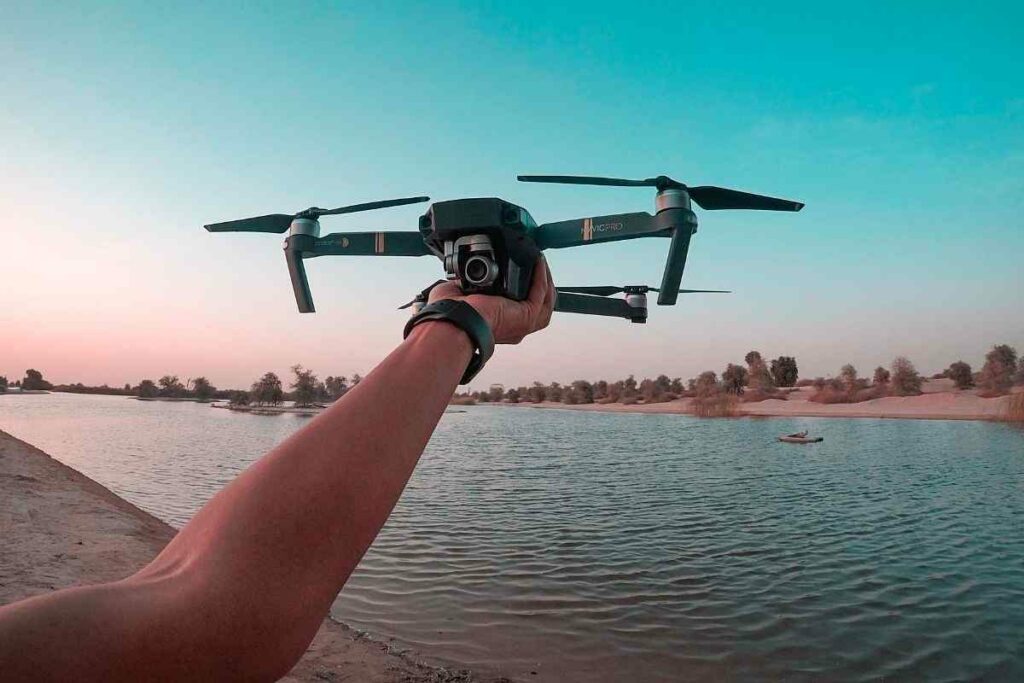Which is better for skiing between gloves and mittens is a question that has sparked countless discussions among snow sports enthusiasts.
With winter sports season fast approaching, we intend to settle this debate around skiing gloves and mittens.
This comprehensive guide delves into all you need to know about skiing gloves and mittens.
The article will help you decide the better option based on your preferences, comfort, and needs.
Gloves vs Mittens for Skiing: Brief Information

Gloves and mittens for skiing serve the same purpose: keeping your hands warm and protected from the elements.
To better understand their functionality, let us look briefly at each handwear, including its strengths and weaknesses.
Gloves
Gloves need no introduction; we all have one or two in our closets.
Pros
Cons
However, skiing gloves are sturdier and have more insulation to keep your hands warm as you conquer the snowy slopes.
The gloves have a firm grip to ensure sufficient traction with the skiing poles as you balance and turn.
Mittens
Mittens are your best buddy heading into extreme cold environments.
Pros
Cons
The closed pouch design traps the heat from all the fingers, keeping your hands warmer for longer.
Besides, since they don’t latch snuggly on fingers, you can comfortably wear mittens for extended periods without frostbite.
While deciding between gloves or mittens for skiing, also remember to pick up travel insurance. Just as you protect your hands from the cold, ensure your trip is shielded from unexpected hiccups.
Differences Between Gloves and Mittens
Let us look in detail at the five significant differences between gloves and mittens for skiing and which is the best in each category:
Warmth
When it comes to keeping your hands warm while skiing, mittens are the outright favorites. Having all your fingers in one pouch enables them to share the heat more efficiently.
As a result of the shared environment, there is less surface area exposed to the elements, which would lead to faster heat loss.
On the other hand, fingers in gloves are separate, meaning each finger loses heat independently.
It increases the heat loss, making your hands colder without any additional insulation.
Winner: Mittens
Breathability
Keeping your hands dry at all times is vital since sweaty hands lead to more heat loss, and gloves are more breathable than mittens.
While separate finger compartments allow heat from your fingers to escape more quickly, they also wick away any moisture.
It effectively prevents your hands from getting sweaty and clammy.
Winner: Gloves
Dexterity
Dexterity refers to how precise and easy you can use your hands and fingers when skiing.
With each finger moving independently when using gloves, they offer better agility than mittens.
It allows for more precise mobility when gripping ski poles or adjusting your skis, boots, or binding.
Wear gloves or mittens that fit snugly but not too tightly to be adequately dexterous.
It may restrict your hand movements since extreme cold temperatures usually make your hands stiff and less agile.
Wiggle your fingers and exercise your arm to improve muscle memory, strength, and coordination.
Winner: Gloves
Versatility
Different weather conditions often require varying levels of insulation.
While mittens excel exclusively in cold conditions, gloves offer a more comprehensive range from moderate spring temperatures to below zero degrees in winter.
Besides, they come in various thicknesses and designs suitable for different temperature ranges.
Winner: Gloves
Pricing
Generally, skiing gloves are cheaper than mittens since many manufacturers make them, which tends to push down their price.
However, high-end gloves from renowned brands can be more expensive than identical mittens.
If you ski more for leisure or are on a budget, do not break the bank for high-grade gear.
Synthetic gloves and mittens may be a better choice since they are inexpensive, easy to care and will provide the requisite mobility and warmth.
However, if you have the financial muscle, premium gear offers more convenience, protection from the elements, and the most satisfying skiing experience.
Winner: Draw
Factors To Consider When Choosing Gloves and Mittens


Before making your purchase, there are fundamental factors you need to consider when choosing a glove or a mitten for skiing to enhance your skiing experience.
These features are:
Insulation
Keeping your hands warm and comfortable elevates your skiing adventures.
As such, the properties of a particular insulating material are crucial when choosing gloves and mittens.
Below are the most common insulation materials used in making gloves and mittens for skiing.
We have highlighted their strengths and shortcomings to enable you to make an informed choice.
- Down: Down is a natural fiber that is lightweight, easily compressible, and retains its insulating properties even when wet. In hindsight, it is quite expensive and delicate to care for.
- Wool: Wool has excellent heat retention, is long-lasting, water repellent, and is naturally flame resistant. However, yarn can be itchy for some people and takes the longest to dry.
- Fleece: Fleece is soft inexpensive, with good moisture-wicking properties. It is less durable than the other insulation materials and can be bulky when wet.
- PrimaLoft: superb warmth-to-weight ratio and as a synthetic material, it is less expensive than natural fibers and more durable than fleece. However, its insulation properties could be better.
Synthetic insulants are combined with other materials to enhance their overall performance and breathability.
For example, if your hands tend to get cold quickly, consider getting yourself liners such as the Hestra Heated Glove Liner.
Liners are thin gloves worn inside your main gloves or mittens to provide an additional insulation layer.
Sizing
Optimal comfort and performance heavily rely on finding the perfect fit for your gloves and mittens.
It calls to you to strike a careful balance between snugness and freedom of movement.
Having the handwear too tight will hinder breathability, and you risk restricting adequate blood flow to your fingers.
On the other hand, if they are too loose, the excess air space reduces the insulation properties and dexterity of your gloves or mittens.
To find the right size, accurately measure your hand’s length (base of your palm to the tip of your longest finger) and width (the circumference just below the knuckles).
Alternatively, refer to the manufacturer’s sizing chart if provided for proper coverage and allow for comfortable movement.
Waterproofing
Bar for avalanches, wet gear is a skier’s worst nightmare.
As such, it is essential to consider the waterproofing capabilities of the gloves or mittens when making your choice.
Let’s look at the best available waterproofing materials for gloves and mittens ranked in order:
1. Gore-Tex®
Gloves and mittens that use Gore-Tex technology offer the best waterproofing and breathability features.
Their innovative designs ensure no water or snow comes in, allowing sweat to escape.
While they are the most expensive gloves and mittens on the market, their superior functionality justifies their premium prices.
Read next
2. Leather
Leather is naturally repellent to water, making it an ideal waterproofing material.
Besides keeping the water out, leather is thick, making it warmer and more durable with proper care and storage. On the other hand, Gore-Tex is more breathable than leather gloves and mittens.
3. Other Synthetic Materials
Nylon, polyester, and polyurethane are the most effective synthetic alternatives to Gore-Tex in making gloves and mittens.
They are inexpensive, lightweight, and available in various sizes and designs. However, their insulation, breathability, and durability properties are not as good as Gore-Tex or leather.
Regarding waterproofing, personal preferences are just as necessary as the brand. For instance, while my better half prefers the feel of leather, I’m a Gore-Tex guy through and through.
Gloves vs Mittens for Skiing: Our Top Picks
You can stay warm and comfortable all day on the slopes with a good pair of gloves or mittens.
To help narrow down your search, here are our top recommendations for both gloves and mittens:
Gloves
I’ve done my research and hands down, the Black Diamond Mens Guide Gloves are the top choice for men.
For women, I’d personally recommend the Tough Outdoors Women’s Ski Gloves.
And for the little ones? The MCTi Kids Gloves are the way to go.
Mittens
After sifting through numerous options, I’ve concluded that the Hestra Army Leather Heli Ski Mitt is the top pick for men.
For the ladies, the Dakine Sequoia GORE-TEX stand out as the prime choice.
And when it comes to the kids, nothing beats the Hestra Gauntlet CZone Junior Mitt. These selections won’t disappoint!
Frequently Asked Questions
Can I use my phone with gloves or mittens on?
This heavily depends on whether the type of gloves or mitten is touchscreen compatible.
Such gloves and mittens have conductive fibers woven into the fabric around the fingertips, allowing you to use your devices without removing them. Remember, using the flat of your finger gives more touchscreen accuracy.
Which is better for snowboarding, gloves or mittens?
For snowboarding, agility is paramount; snowboarders prefer gloves with reinforced palms and knuckles for abrasion resistance.
Sometimes, they may add grip stiffeners to give them more stability on the slopes and improve mobility when adjusting bindings.
Final Thoughts: Gloves vs Mitten for Skiing
Ultimately, choosing which is better for skiing between gloves and mittens comes down to your personal preferences, comfort, and budget considerations.
While gloves offer more excellent dexterity for fine motor tasks, mittens excel in warmth and comfort.
Hopefully, this guide has provided all the information about skiing gloves and mittens, including how to find the perfect pair of gloves or mittens for your next ski trip. So get out there and enjoy the skiing!
- Ulanzi U60 RGB Video Light Review
- Stuff Sack Vs. Compression Sack (Complete Comparison)
- Best Wetsuits for Surfing (Top 7 Picks & Buying Guide)
- Best Shoes For Slippery Rocks (Top 8 Picks & Buying Guide)
- Packing Cubes Vs. Compression Bags (All You Need to Know)
- Best Drones for Hiking (Top 4 Picks & Buying Guide)

















